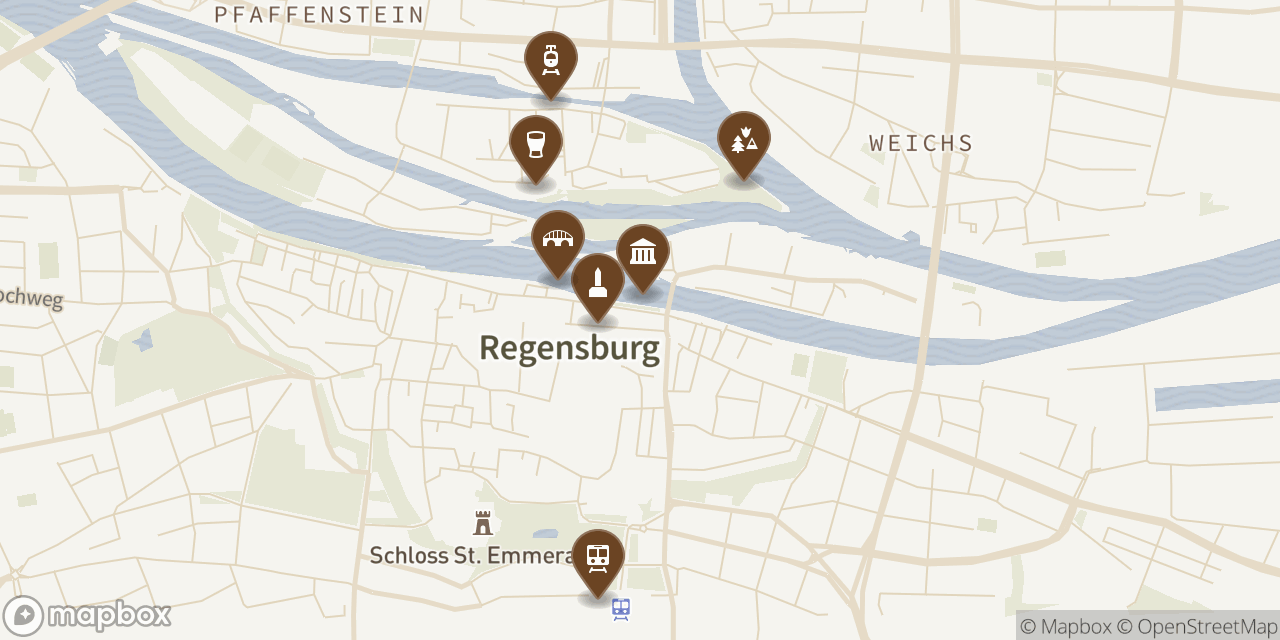Medieval Regensburg: 2000 Years of Bavarian History | Bavaria, Germany
Walk through 2000-year-old Roman gates and medieval streets
Marvel at Tuscan-inspired towers from the city's golden age
Enjoy authentic Bavarian cuisine at the historic Wurstkuchl
Explore the Danube's shipping heritage on a museum boat
Why We Love This Trip
Interactive Map

Points of Interest
Your Day Trip Timeline
Start at Regensburg Hauptbahnhof
Begin your journey at the main train station
View the Roman Wall
See where medieval and Roman fortifications blend together
Visit the Porta Pretoria
Visit one of only two preserved Roman gates north of the Alps
Explore the Medieval Tower District
Discover the 20 remaining patrician towers from the city's golden age
View St. Peter's Cathedral
Admire the Gothic architecture from the outside
Visit the Salt Storage Building
Learn about Regensburg's history as a major salt trading hub
Visit the Danube Shipping Museum
Learn about the river's trading history aboard a historic vessel
Lunch at Historic Wurstkuchl
Try traditional sausages at this 500-year-old riverside restaurant
Cross the Stone Bridge
Walk the medieval bridge for spectacular river views
Explore the Danube Islands
Enjoy nature spaces and see the confluence of rivers
Return to Hauptbahnhof
Head back to catch your train to Munich or other destinations
Ben's Deep Dive
Beyond its stunning medieval towers and Roman gates, Regensburg's story unfolds through centuries of strategic river trade, architectural innovation, and culinary traditions that have shaped Bavaria's most underrated gem.
Support Us
Plan Your Trip
Get personalized recommendations and custom itineraries for your Munich adventure. Whether you need help planning the perfect day trip, finding hidden gems, or creating a multi-day itinerary, we're here to make your Munich experience unforgettable.
| Consultation | Time |
|---|---|
| Quick Q&A | 20 min |
| Tailored Consultation | 45 min |
Join Our Tours
Experience Munich like a local with our personalized walking tours and full-day adventures! From hidden gems to local favorites, we'll show you the authentic side of Munich that most tourists miss.